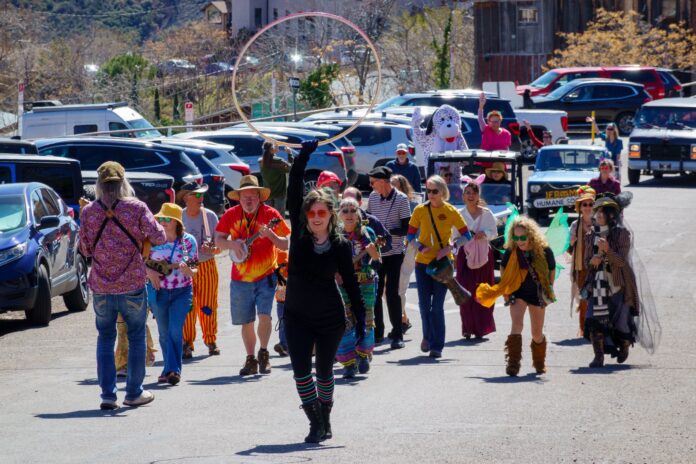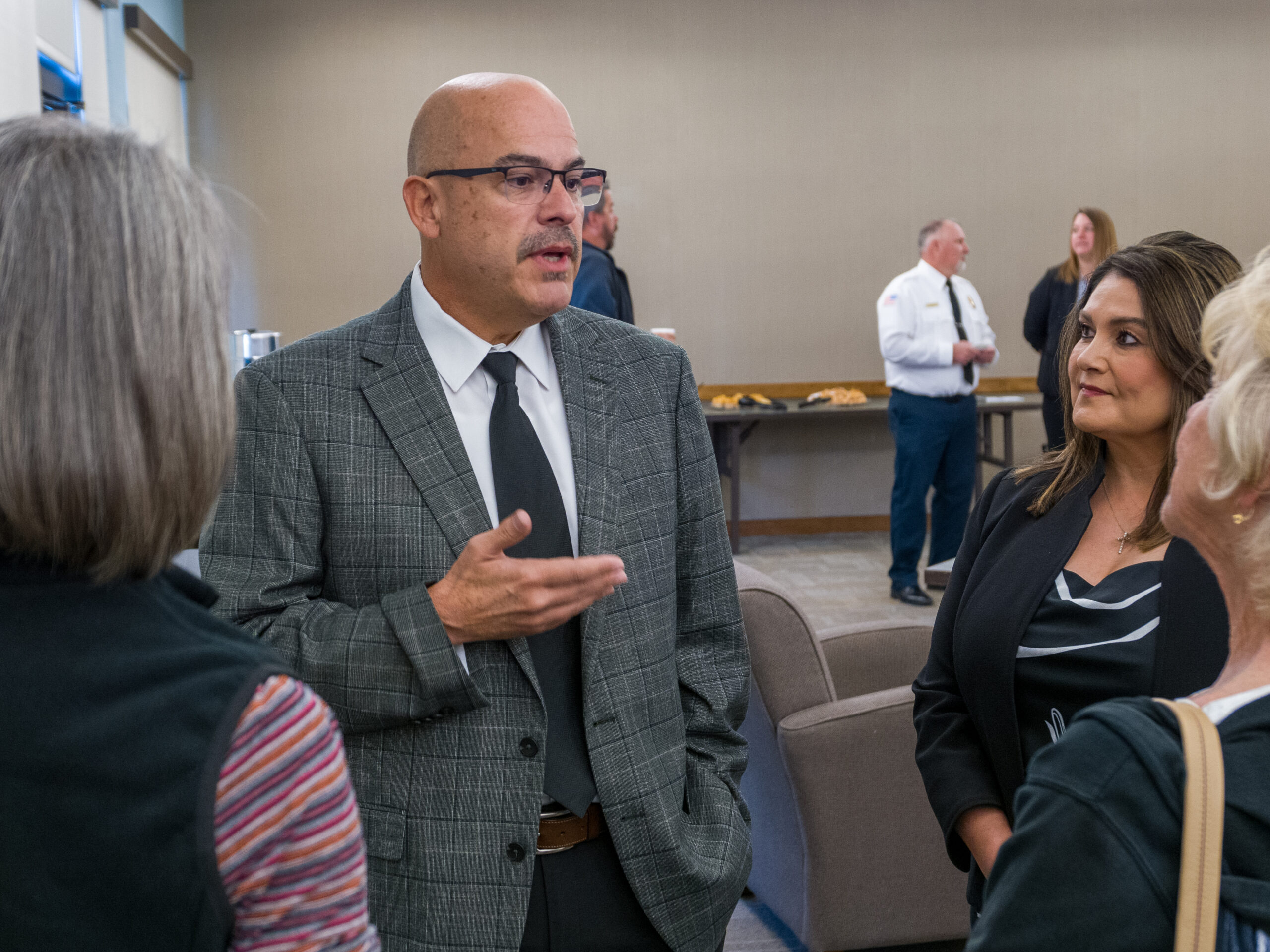Jerome celebrated its 125th birthday on Saturday, March 9, with a birthday parade, community potluck, live music, an archaeological and geological display by Jerome’s historic preservation officer, a shrine to past Jerome residents at the Bartlett Hotel ruins and a slideshow of historic photographs.
The celebratory birthday parade featured the Jerome Fire Department, Jerome Police Department, Jerome Humane Society and locals in old and unique vehicles.
The first recorded mining claim in Jerome was filed in 1876, but Jerome was not officially incorporated until March 1899, when it became the fifth-largest city in Arizona. At its peak, Jerome had a population of almost 15,000.
Al Sieber, who was a scout for Gen. George Crook, staked the first claim, but the later claims of M.A. Ruffner and Angus McKinnon brought about much more interest in the area and its potential.
In 1883, the United Verde Copper Company consolidated a number of claims and started to work the Jerome mines, smelting 1 million pounds of copper in the first year. Jerome’s namesake was Eugene Murray Jerome of New York, who invested in the mines with the stipulation that the mining camp be named after him.
William A. Clark was in the business of supplying dry goods to mines and later purchased the United Verde after seeing copper ore at the Exposition of 1885 in New Orleans. The United Verde later became the richest privately-owned copper mine in the world.
Jerome was prone to fires, and the town burned to the ground three times between 1897 and 1899. The sulfide ores had to be roasted with wood before being smelted, and sulfur often ignited inside the mines, causing underground fires.
A poster of an 1898 newspaper clipping from the Prescott Weekly Courier that was hanging at Spook Hall over the weekend stated that six persons were known to be killed or burned and 15 reported missing following the fire of Sept. 11, 1898.
Incorporation of the town allowed Jerome to acquire a water tank and firefighting equipment to deal with any future fires. The town soon recruited and trained a volunteer fire department and developed a hose team that won a large contest in 1907 at Prescott’s Fourth of July celebration. The hose race involved seeing which team could post the fastest time in racing to a hydrant and getting water through the hose, all while drawing a two-wheeled cart with a hose reel.
Jimmy “Rawhide” Douglas purchased the Little Daisy Mine in 1912 and hit a vein of 45% copper, which set off another boom that lasted into the 1930s.
The land later started to cave in beneath the smelter, leading to the closure of the UVCC smelter and the foundation of the Clarkdale smelter and town in 1915. Open-pit mining began where the smelter was formerly located in 1918.
In 1938, the Little Daisy mine shut down, and the UVCC ceased operations due to lack of ore in 1953. After the closure of the mines the population dwindled, going from a peak of 15,000 residents to only a few hundred. Jerome now has a population of 445 and a median age of 57.



